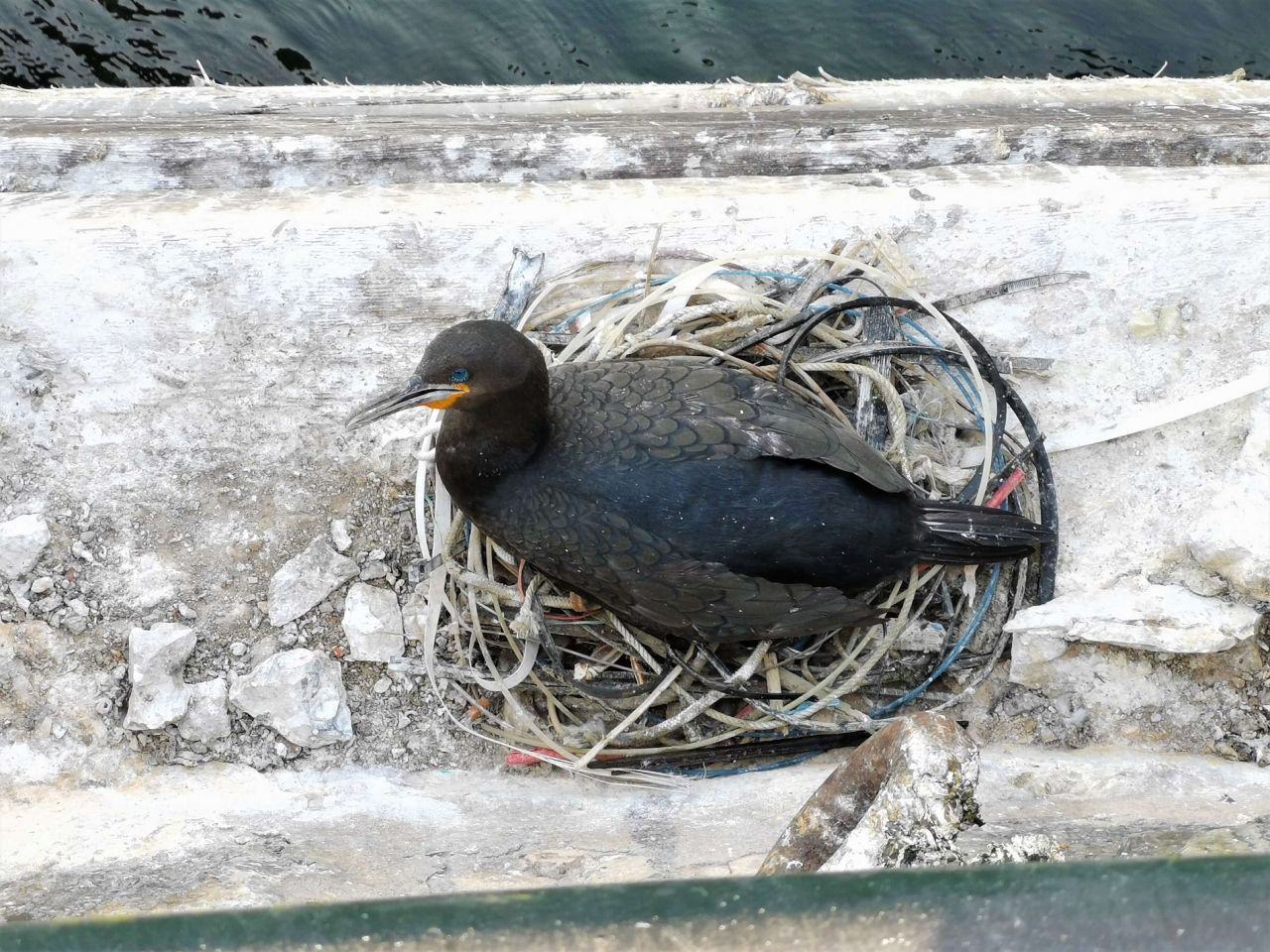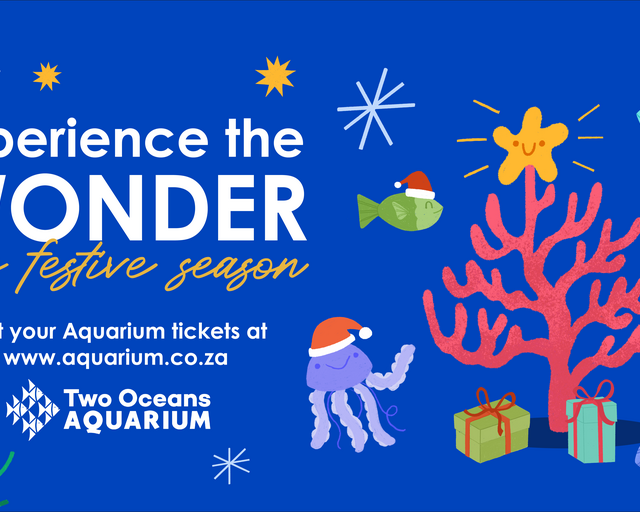Living in an environment that is "sustainable for all life" was a huge thematic focus for World Wildlife Day 2020. We tend to think of this as protecting plants and animals that live in natural environments, but what happens to wildlife that has already been displaced or had its natural habitat replaced by an artificial, human-made one?
Two Oceans Aquarium Foundation's Marine Wildlife Manager Brett Glasby and Seal Monitor Ayanda Cimoni met up with the team from the V&A Waterfront's Table Bay Hotel to share with them information about the wildlife found in the V&A Waterfront, to pick up some litter, and to get to know some of our local seals a little better (the Table Bay Hotel's mascot is Oscar the Seal after all).
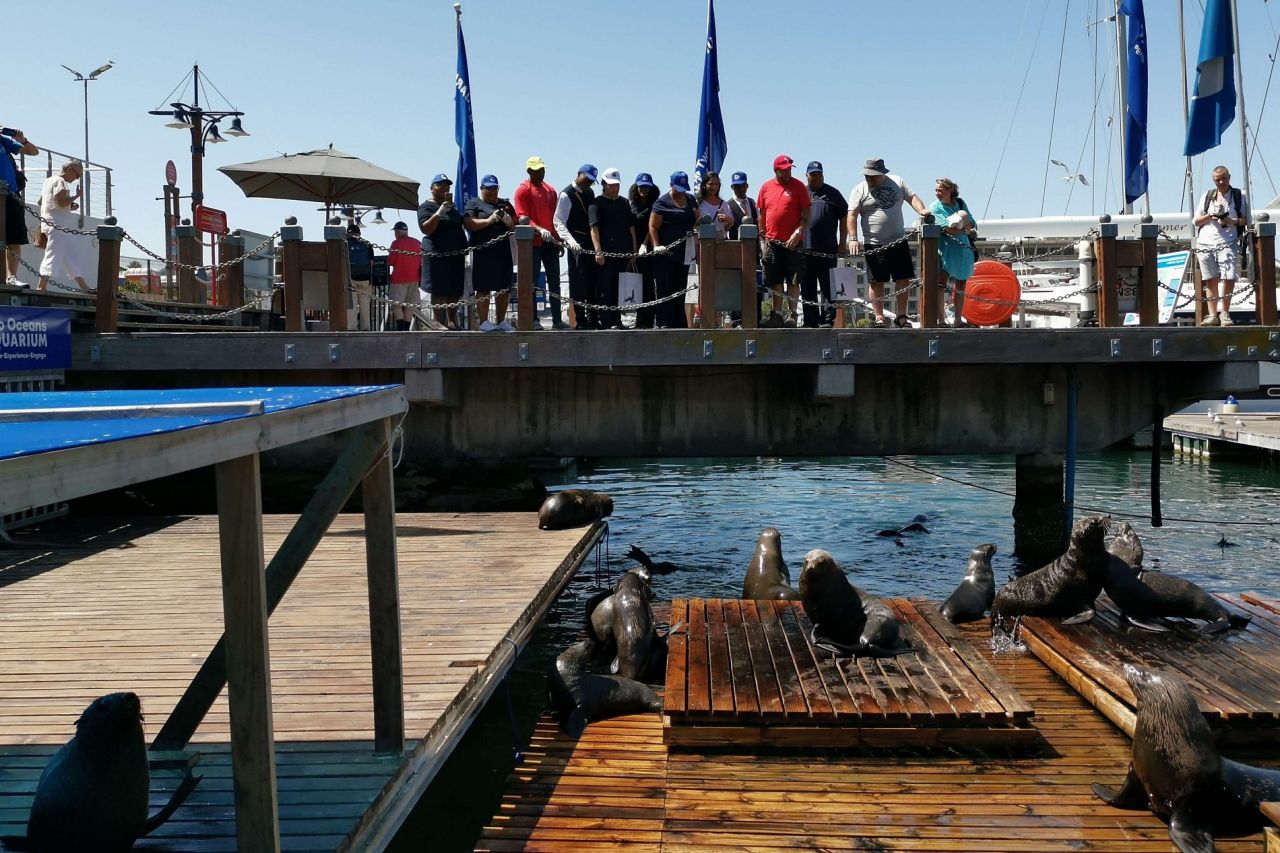
Cormorants
The V&A Waterfront is home to a colony of endangered Cape cormorants. These precious, protected seabirds have taken up residence under the Swing Bridge near the Nelson Mandela Gateway. In this completely artificial environment, these birds aren't finding natural materials to build their nests - instead, they are building them using synthetic materials: Nylon rope fragments, zip-ties, old T-shirts, plastic packaging, etc.
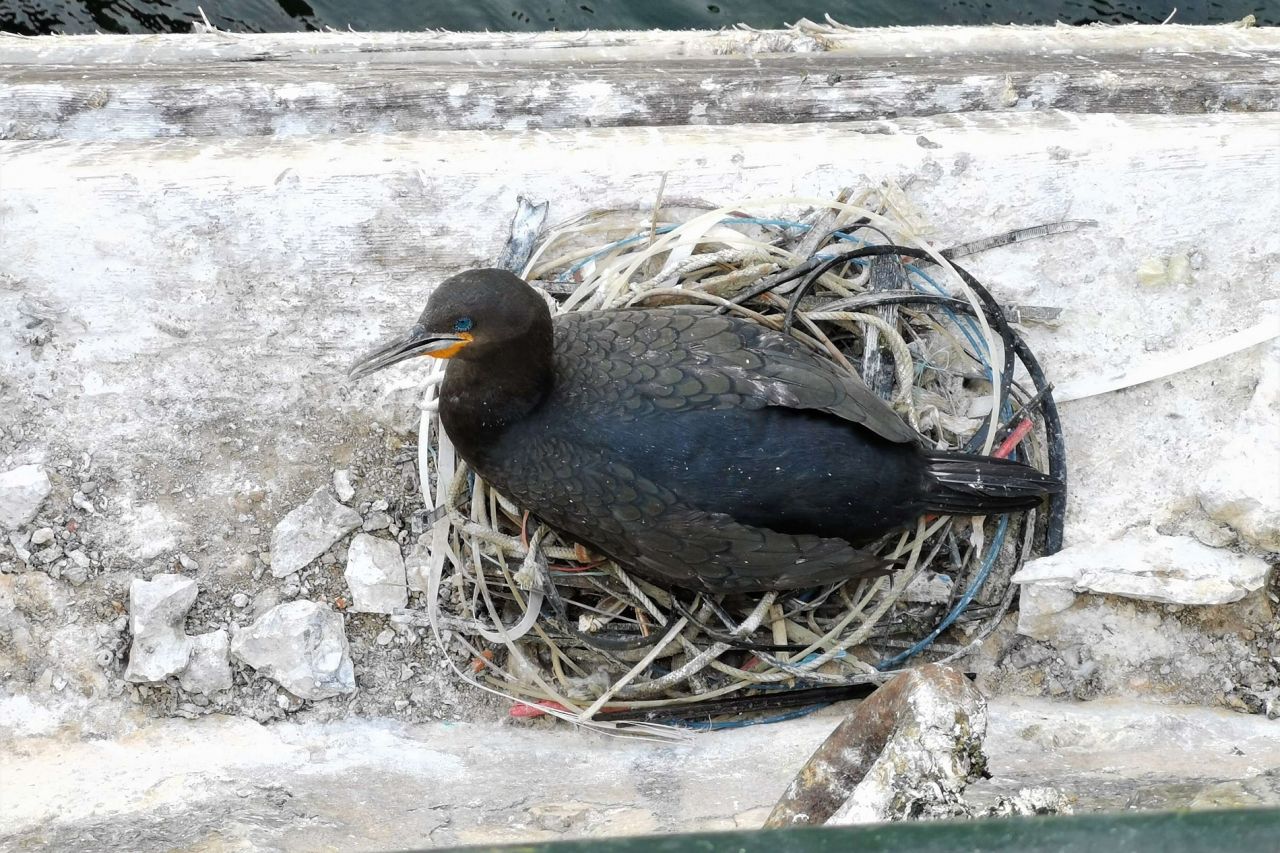
For the urban cormorants, these bits of plastic are crucial - without them, they would not be able to build nests. These nests allow approximately 60 chicks to be successfully reared each year! Unfortunately, this plastic still poses a risk - and every year we see a few cormorants and their chicks becoming entangled, sometimes fatally. These cormorants show an incredible lesson about just how resilient and resourceful animals can be in a human-made setting, but they still require some help - such as making provision for plants that provide natural nesting materials.
Seals
The Cape fur seals of the V&A Waterfront and Cape Town Harbour are a great example of animals that have come to thrive in a completely artificial setting. The harbour provides plenty of food to the seals in the form of discards from fishing boats and small fish that take shelter there, and there are virtually no predators to threaten the seals. This would be a perfect seal habitat, if it weren't for the threats us humans impose on them - fast-moving boats, plastic pollution and the occasional angry boat owner.
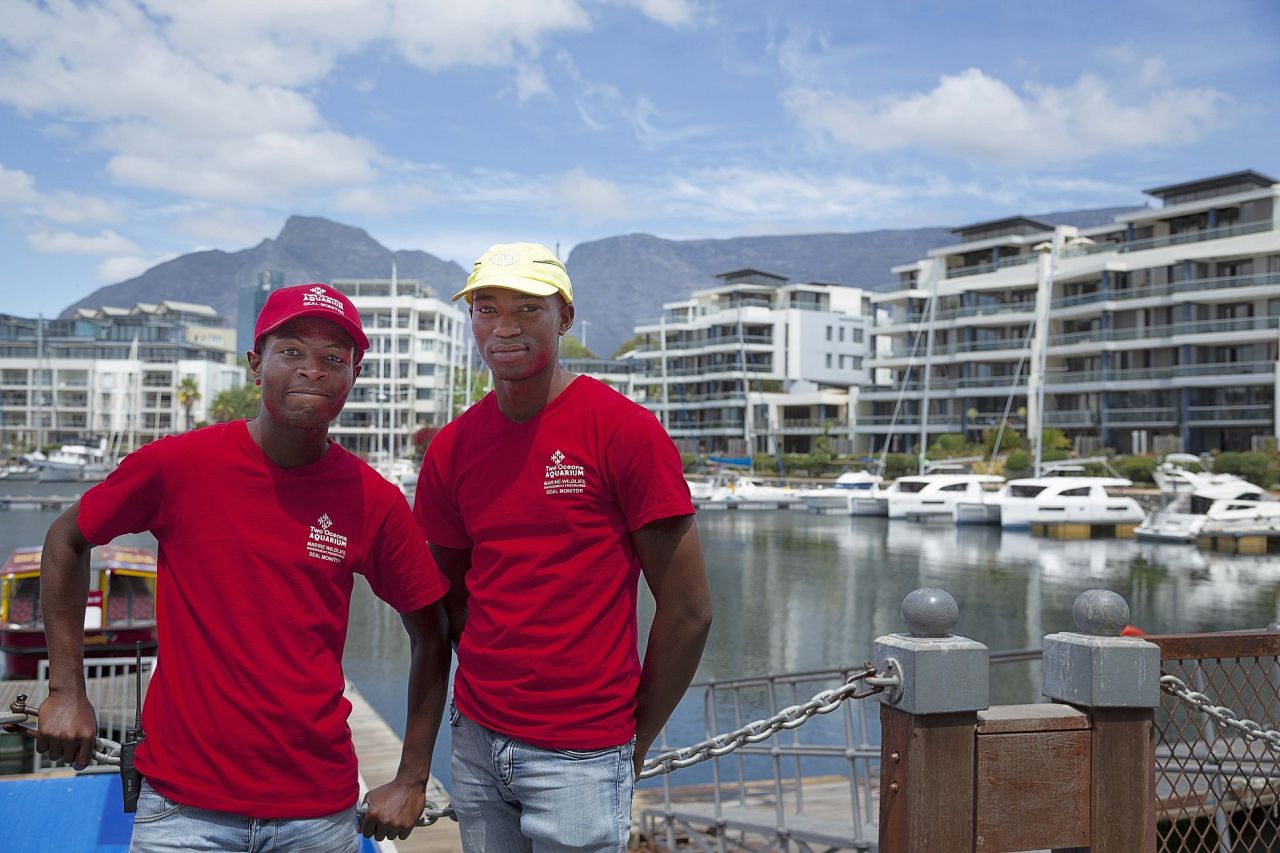
However, these seals are an excellent example of how wildlife can be managed in a way that allows them to exist in relative harmony with their synthetic environment. Seals in the V&A Waterfront are provided with a number of manmade platforms, strategically placed throughout the area. Seal Monitors patrol the surrounding area and disturb sleeping seals found in locations other than these platforms - thus, the seals become used to using the specified platforms as safe refuges.
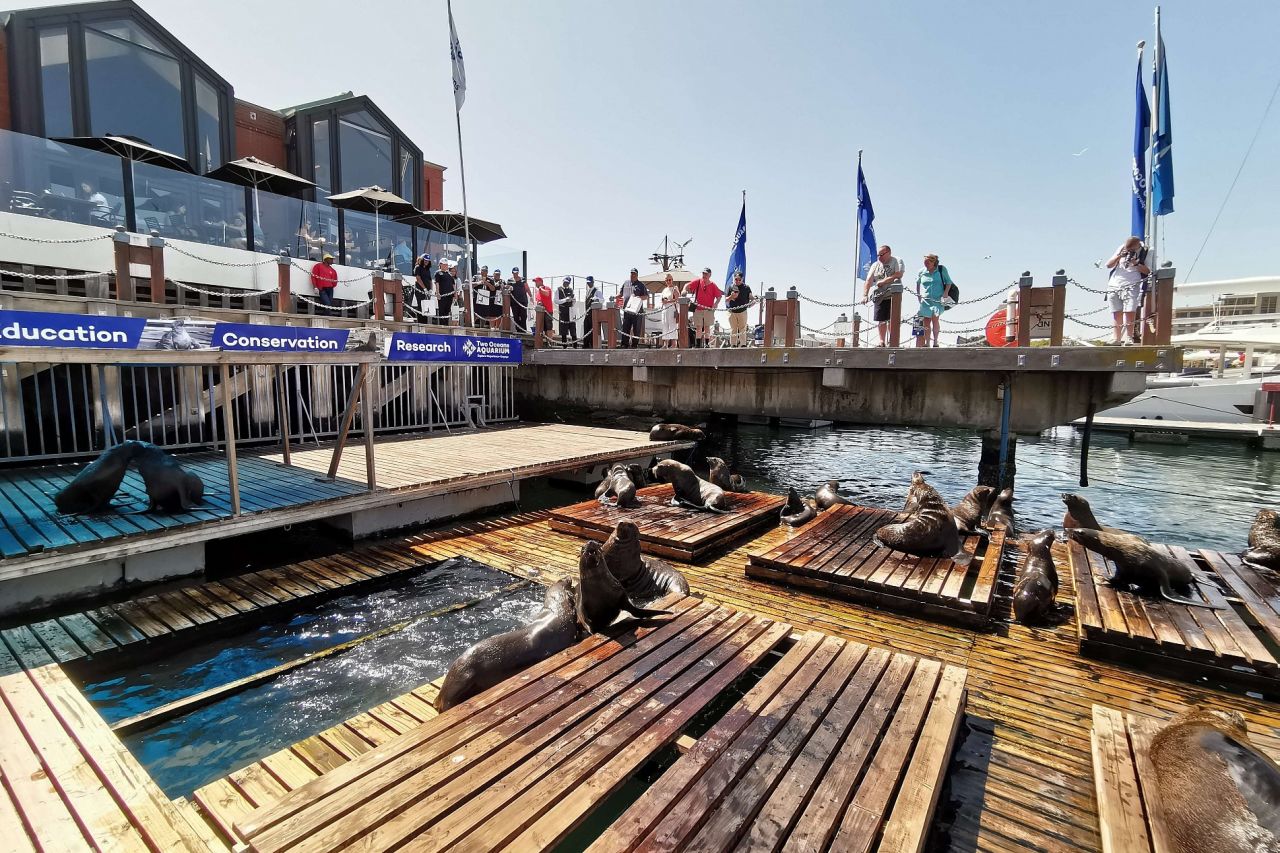
These platforms are put in locations where the seals' contact with humans are minimised (to avoid potential injury to both parties), and so that injured or entangled seals can be easily treated or freed by the Aquarium's Marine Wildlife Management staff (or "seal ninjas" as we like to call them). This arrangement keeps all parties healthy and happy - an ideal habitat within a busy harbour.
What can we do?
Making cities habitable for animals has a number of benefits for the humans living there too. Highly adaptable animals - ones you often think of as pests like rats, mice, mosquitos and cockroaches - often thrive in cities because their natural predators, or species that they would compete against in nature, are unable to adapt, leaving the pest population unchecked. By making our cities slightly more hospitable, eg. by adding owl boxes to eaves or by planting indigenous gardens, we are allowing greater biodiversity to enter our urban centres, and this diversity keeps animal populations in balance.
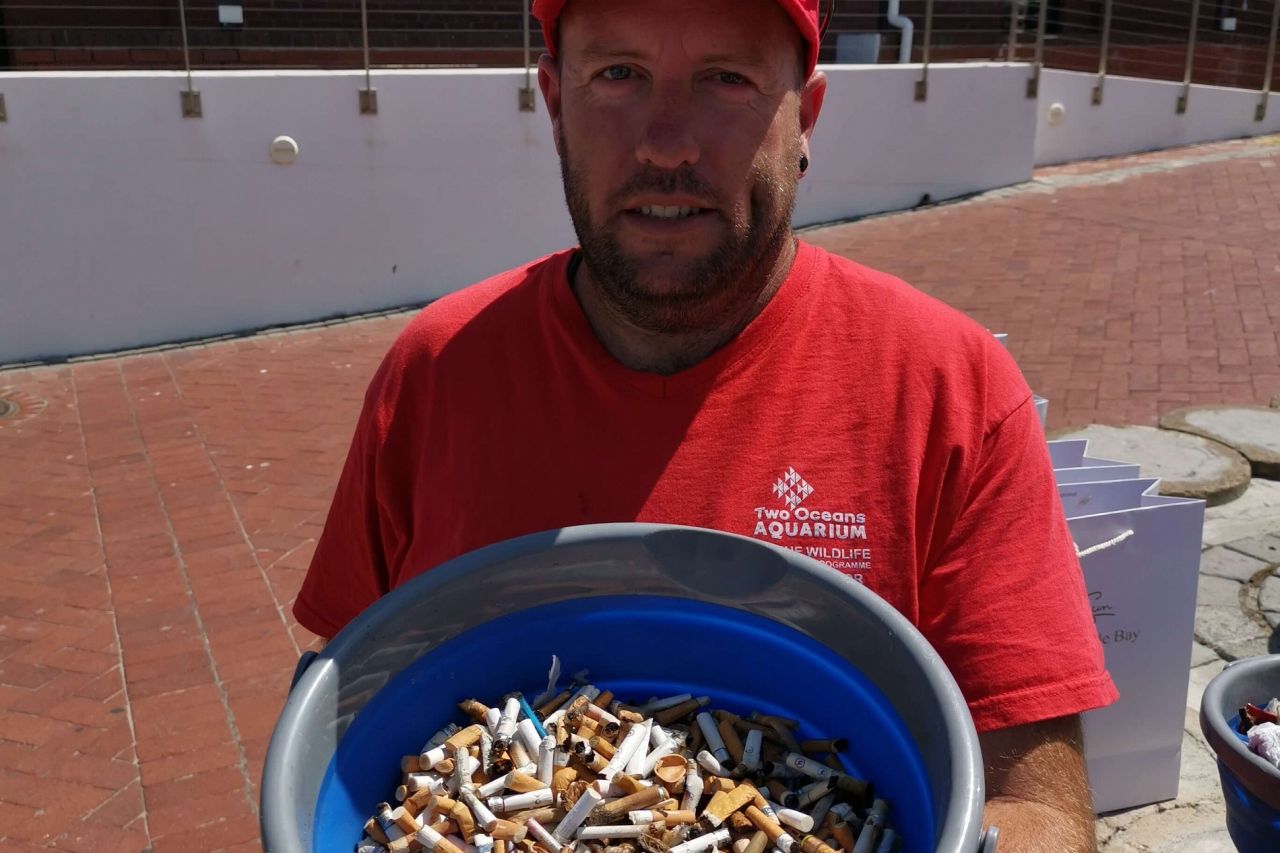
Cape Town is exceptional, wildlife like seals, caracals, owls and cobras exist right on the urban edge. The V&A Waterfront is an "ecosystem" with a wealth of incredible animal life - but so is the rest of our city. Let's all do our part to make, and to keep, Cape Town a thriving hub of biodiversity!
Related News
Sign up to our Newsletter
Receive monthly news, online courses and conservation programmes.
